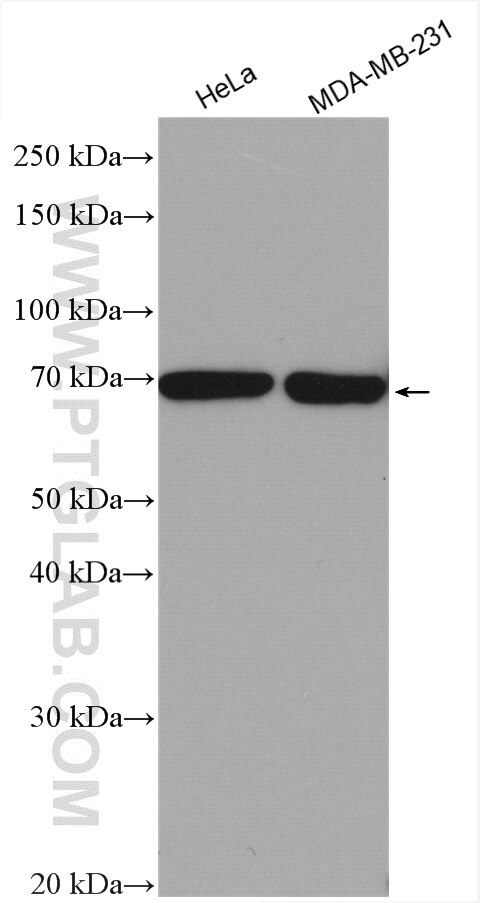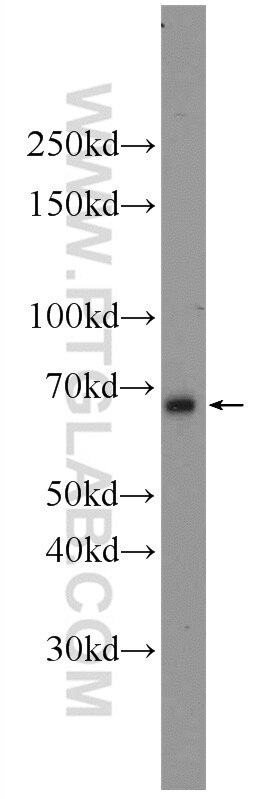ANKRD13C Polyklonaler Antikörper
ANKRD13C Polyklonal Antikörper für WB, ELISA
Wirt / Isotyp
Kaninchen / IgG
Getestete Reaktivität
human, Maus
Anwendung
WB, ELISA
Konjugation
Unkonjugiert
Kat-Nr. : 24000-1-AP
Synonyme
Geprüfte Anwendungen
| Erfolgreiche Detektion in WB | HeLa-Zellen, MDA-MB-231-Zellen, Maushodengewebe |
Empfohlene Verdünnung
| Anwendung | Verdünnung |
|---|---|
| Western Blot (WB) | WB : 1:500-1:2000 |
| It is recommended that this reagent should be titrated in each testing system to obtain optimal results. | |
| Sample-dependent, check data in validation data gallery | |
Produktinformation
24000-1-AP bindet in WB, ELISA ANKRD13C und zeigt Reaktivität mit human, Maus
| Getestete Reaktivität | human, Maus |
| Wirt / Isotyp | Kaninchen / IgG |
| Klonalität | Polyklonal |
| Typ | Antikörper |
| Immunogen | ANKRD13C fusion protein Ag21202 |
| Vollständiger Name | ankyrin repeat domain 13C |
| Berechnetes Molekulargewicht | 541 aa, 61 kDa |
| Beobachtetes Molekulargewicht | 65-70 kDa |
| GenBank-Zugangsnummer | BC028840 |
| Gene symbol | ANKRD13C |
| Gene ID (NCBI) | 81573 |
| Konjugation | Unkonjugiert |
| Form | Liquid |
| Reinigungsmethode | Antigen-affinitätsgereinigt |
| Lagerungspuffer | PBS with 0.02% sodium azide and 50% glycerol |
| Lagerungsbedingungen | Bei -20°C lagern. Nach dem Versand ein Jahr lang stabil Aliquotieren ist bei -20oC Lagerung nicht notwendig. 20ul Größen enthalten 0,1% BSA. |
Hintergrundinformationen
ANKRD13C, also termed as ankyrin repeat domain 13C, belongs to the ankyrin repeat domain 13 family. ANKRD13C is localized on ER membranes where it binds to DP to control its biogenesis and trafficking. ANKRD13C modulates the expression and maturation of other G pretein coupled receptors as well, indicating that ANKRD13C is a novel regulator of the biogenesis and trafficking of G pretein coupled receptors through the biosynthetic pathway.
Protokolle
| PRODUKTSPEZIFISCHE PROTOKOLLE | |
|---|---|
| WB protocol for ANKRD13C antibody 24000-1-AP | Protokoll herunterladen |
| STANDARD-PROTOKOLLE | |
|---|---|
| Klicken Sie hier, um unsere Standardprotokolle anzuzeigen |



